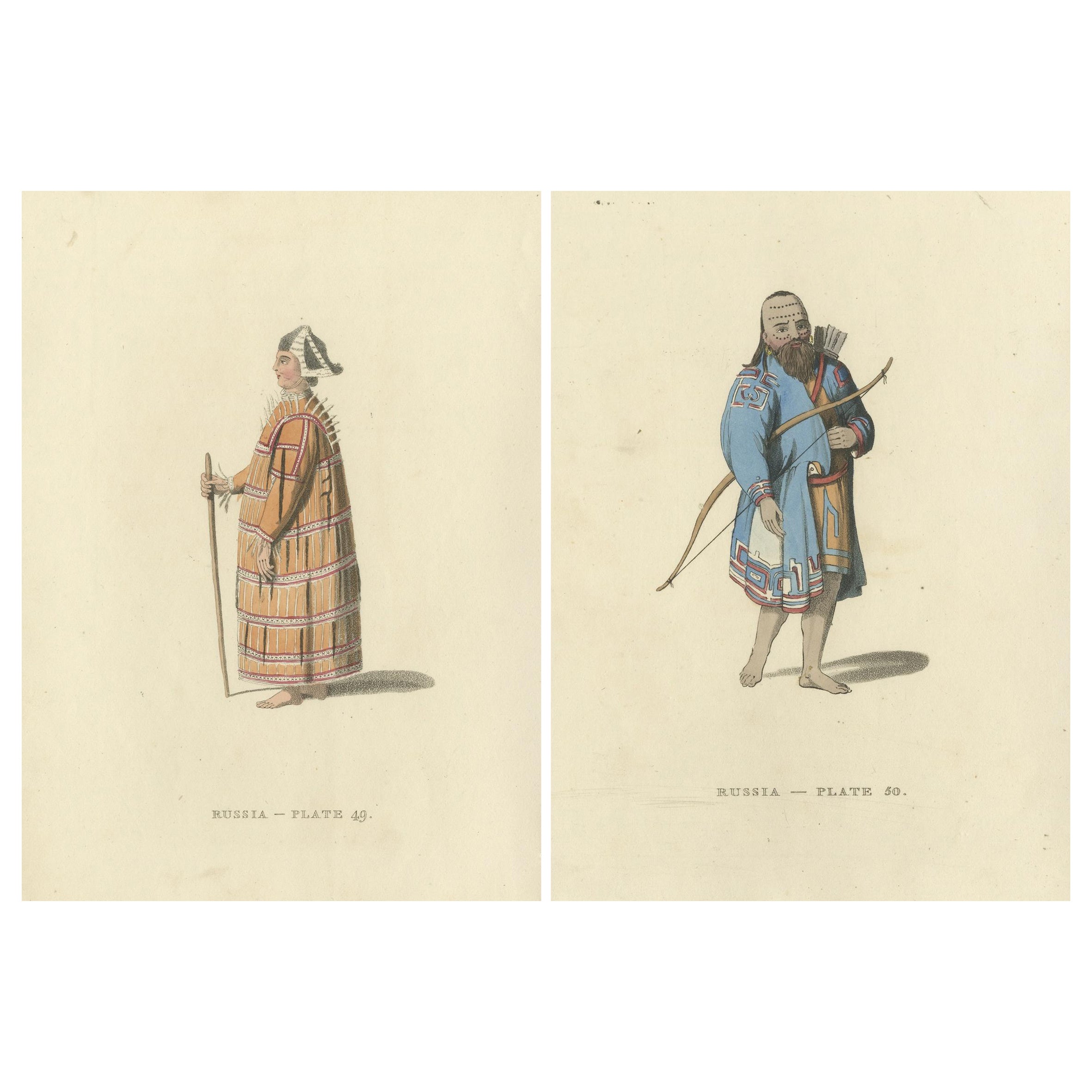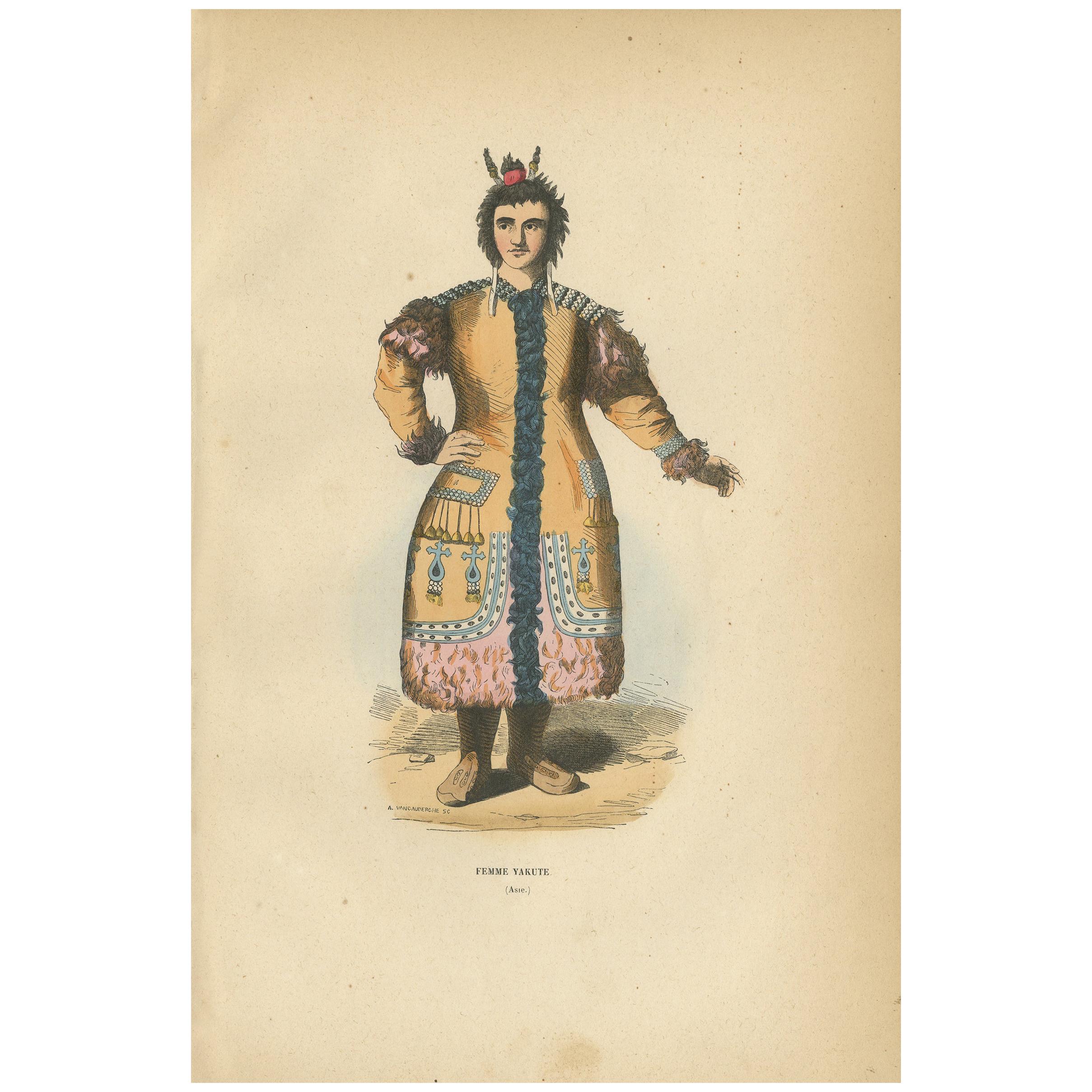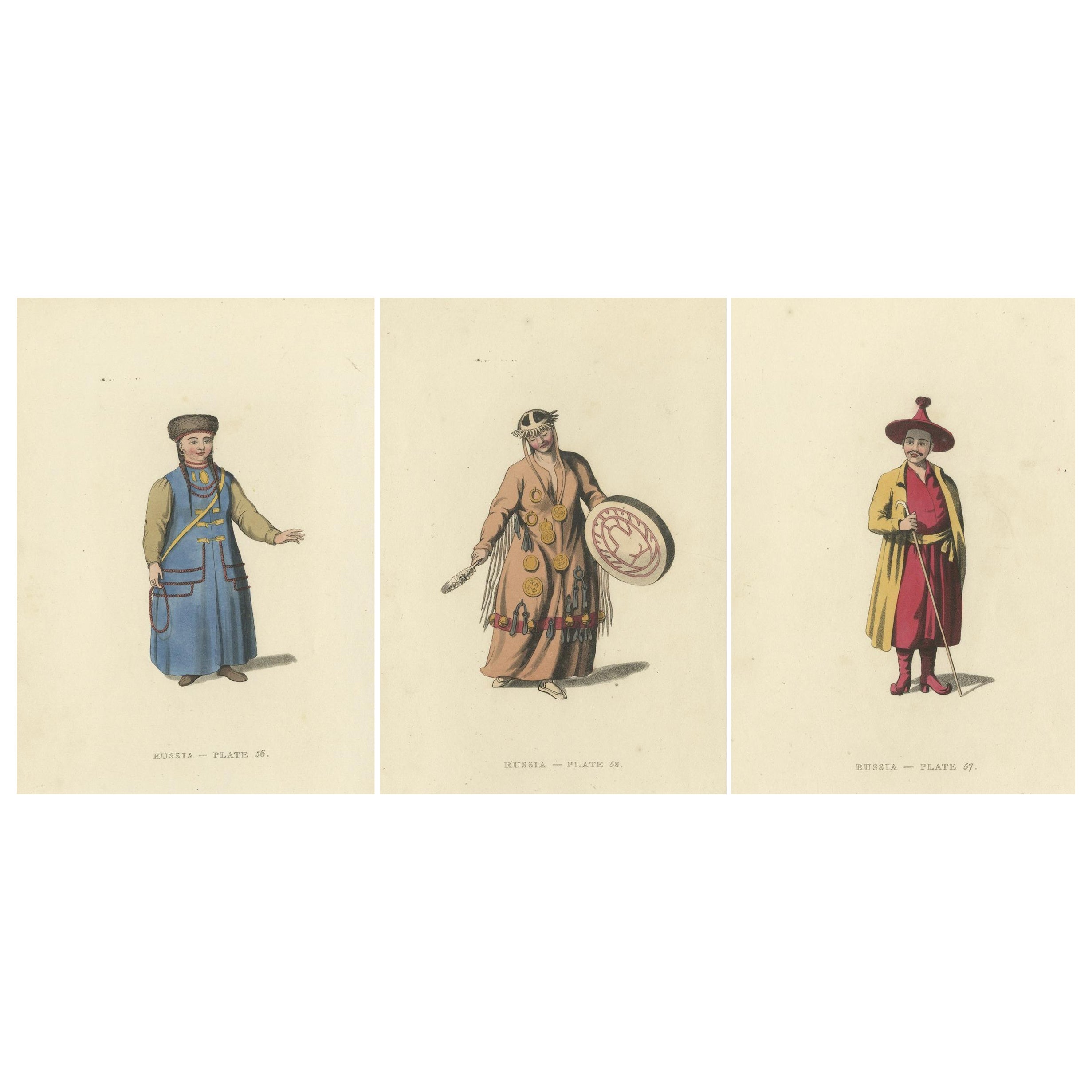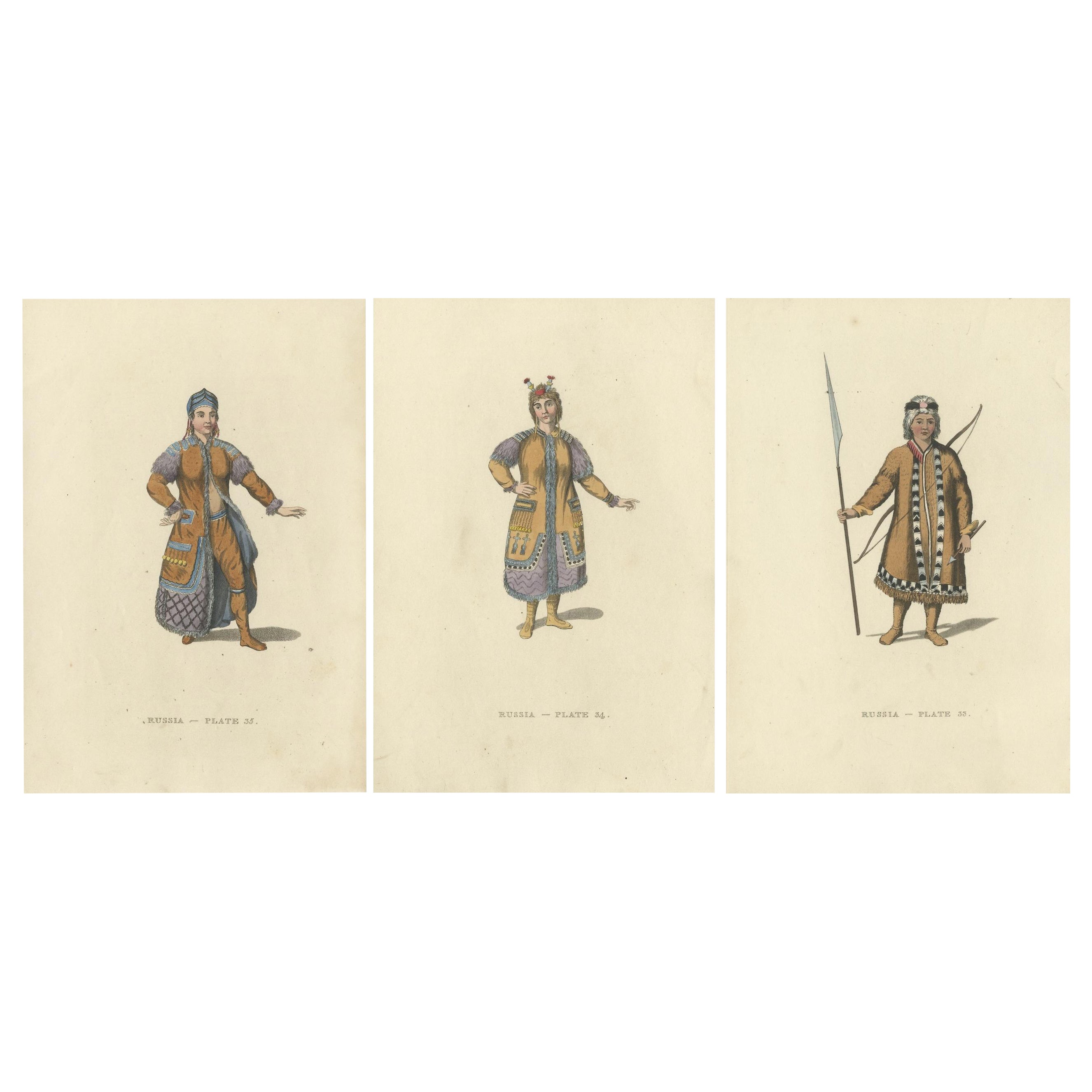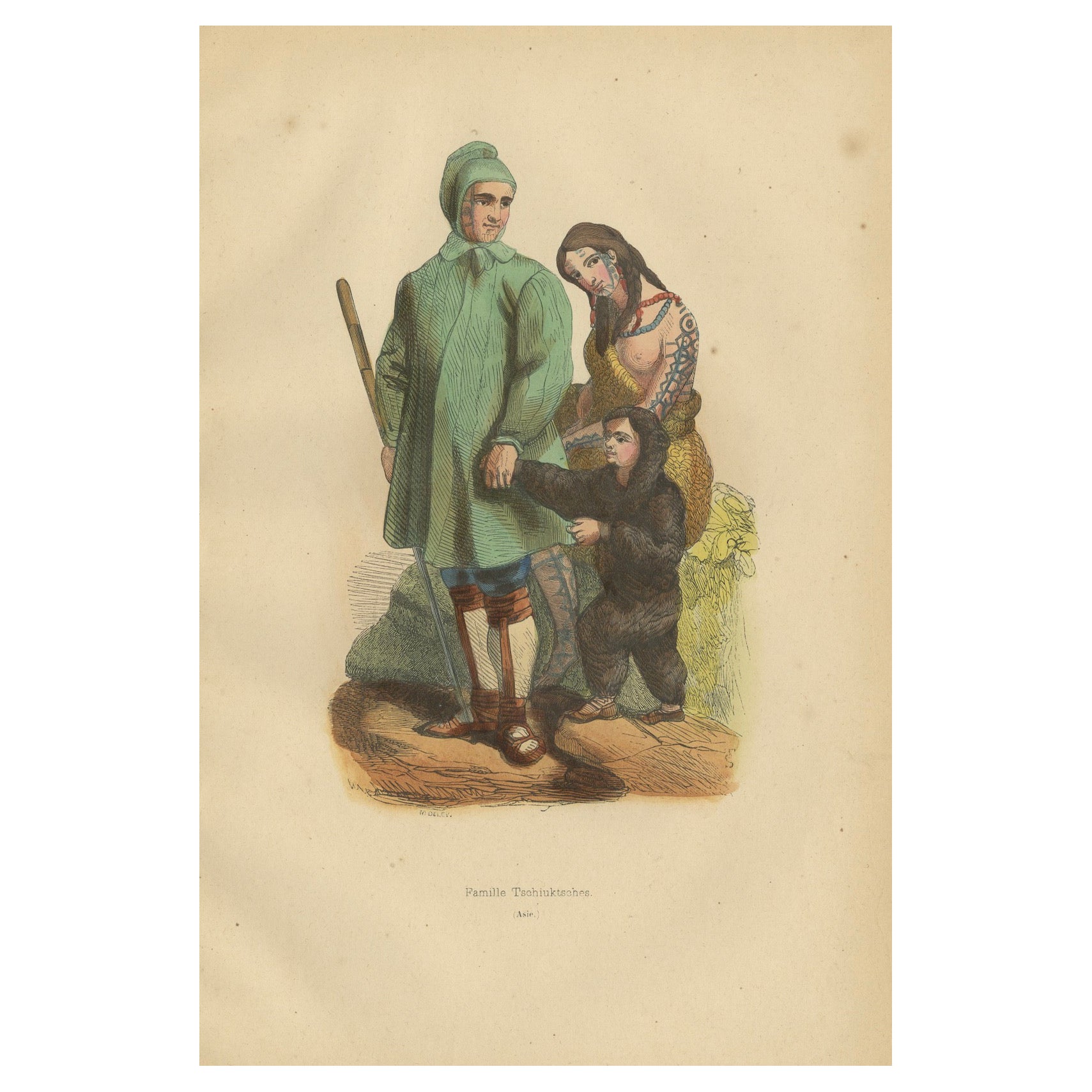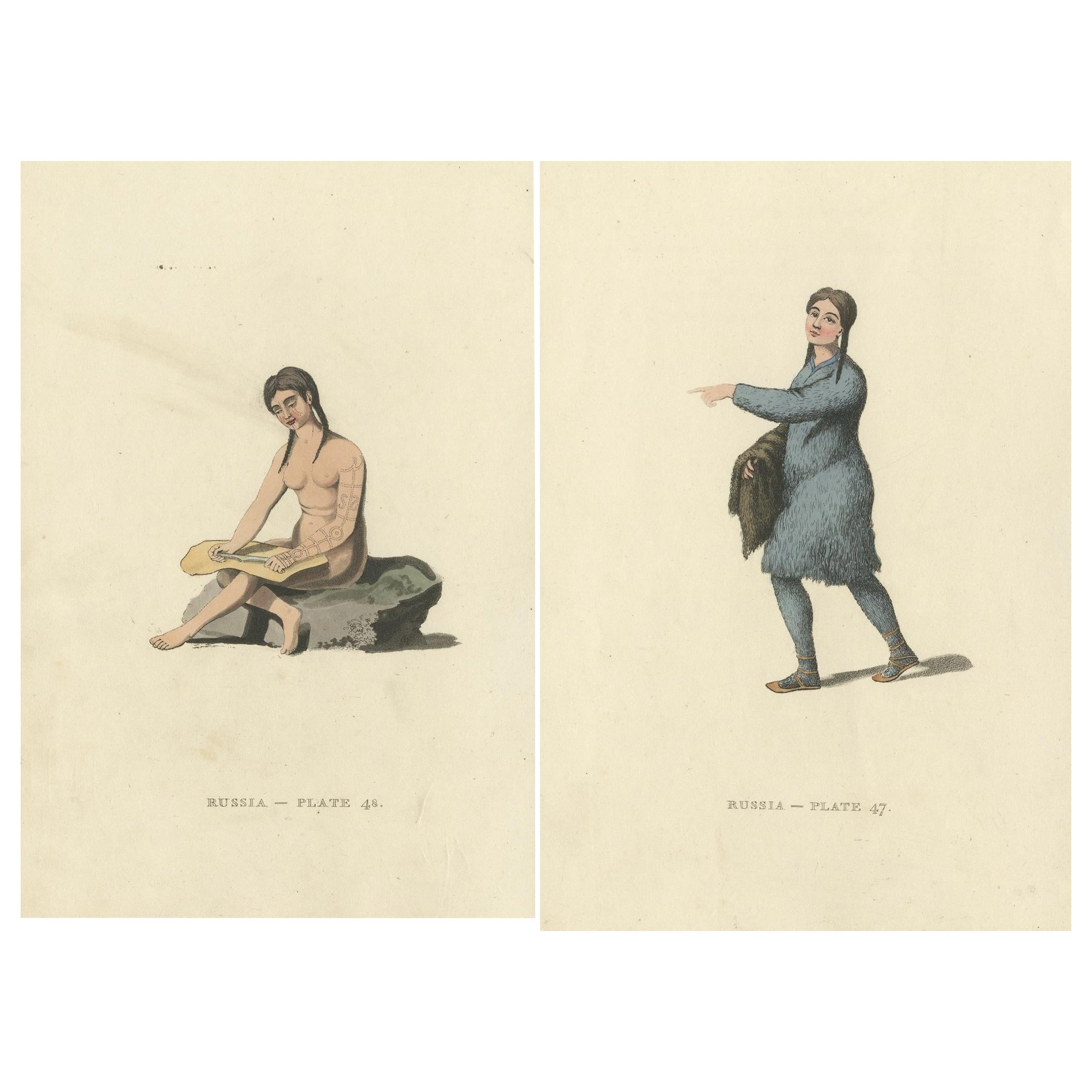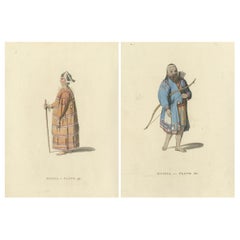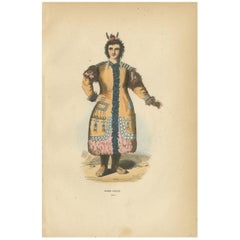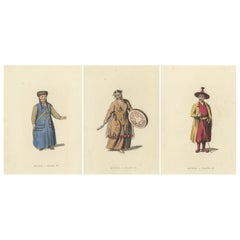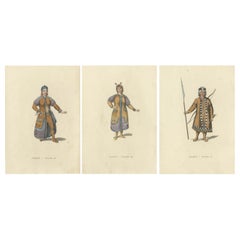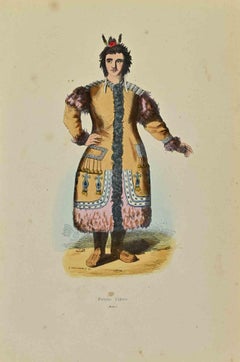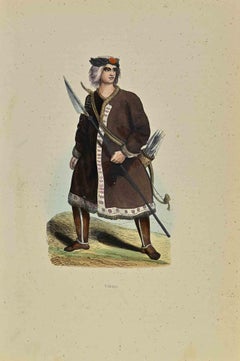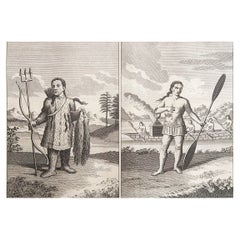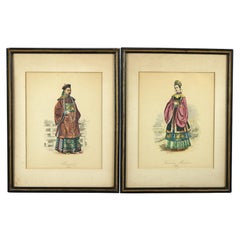Items Similar to Yakut People in Traditional Attire, 1844 Handcolored Lithographs
Want more images or videos?
Request additional images or videos from the seller
1 of 8
Yakut People in Traditional Attire, 1844 Handcolored Lithographs
$268.38per set
$335.48per set20% Off
£199.76per set
£249.70per set20% Off
€224per set
€280per set20% Off
CA$367.62per set
CA$459.52per set20% Off
A$408.87per set
A$511.09per set20% Off
CHF 213.50per set
CHF 266.88per set20% Off
MX$4,975.55per set
MX$6,219.43per set20% Off
NOK 2,726.73per set
NOK 3,408.41per set20% Off
SEK 2,557.19per set
SEK 3,196.49per set20% Off
DKK 1,705.23per set
DKK 2,131.54per set20% Off
Shipping
Retrieving quote...The 1stDibs Promise:
Authenticity Guarantee,
Money-Back Guarantee,
24-Hour Cancellation
About the Item
Yakut People in Traditional Attire, 1844 Handcolored Lithographs
These 1844 handcolored lithographs feature individuals from the Yakut community, part of Auguste Wahlen's extensive series "Moeurs, Usages et Costumes de tous les Peuples de Monde."
Published in Paris, these prints vividly capture the traditional clothing and accessories of the Yakut people, an ethnic group primarily found in Siberia, Russia.
The Yakut people, also known as the Sakha, have a rich cultural heritage deeply intertwined with the extreme environment of Siberia. Here are some interesting aspects highlighted in the prints and about the Yakut people more broadly:
1. Clothing for Extreme Cold: The traditional clothing worn by the Yakut in the prints is highly functional, designed to withstand the subarctic climate of Siberia. It often includes layers of fur and intricate decorations, which serve both practical and aesthetic purposes.
2. Spiritual Beliefs: The Yakut have a strong connection to animism and shamanism, which is reflected in their cultural practices and sometimes in their attire, which may include symbolic motifs and amulets meant to offer protection or spiritual power.
3. Horse Culture: The Yakut are renowned for their horse breeding, and the horse holds a significant place in their society. This is not directly depicted in the prints you provided but is a central aspect of their lifestyle, impacting their transport, food, and social rituals.
4. Economic Adaptations: Traditionally, the Yakut engaged in cattle and horse breeding, hunting, and fishing. Their economic practices are adapted to the cyclic seasons of the Arctic, demonstrating a deep understanding of local ecology.
5. Language and Art: The Yakut language belongs to the Turkic group of languages, and it has preserved many ancient Turkic elements. Their folklore is rich with epic poetry and music, which often features traditional instruments that are unique to their culture.
6. Ysyakh Festival: One of the most significant cultural events for the Yakut is the Ysyakh festival, held in June during the summer solstice. It includes a variety of rituals, dances, games, and singing, celebrating renewal and fertility. The attire during this festival is especially ornate and symbolic.
These aspects make the Yakut an intriguing subject for ethnographic study and artistic representation, as their way of life and adaptations to one of the harshest climates on Earth are both unique and fascinating.
The detailed artwork highlights their unique cultural attire, including fur garments and ornamental headdresses, which are essential for survival in the harsh Siberian climate.
The prints are striking for their vibrant use of color and meticulous attention to detail, which bring to life the intricate patterns and designs of Yakut clothing. The use of handcolored lithography allows for a vivid portrayal of textures and colors, enhancing the visual appeal and the ethnographic accuracy of the representations.
Keywords:
- Antique Yakut prints
- Handcolored lithographs
- Siberian traditional attire
- 19th-century cultural costumes
- Auguste Wahlen ethnographic prints
- Collectible historical prints
- Ethnographic art from Asia
- Traditional Siberian clothing
- Cultural heritage lithographs
- Vintage ethnic costumes
These keywords would be particularly useful for collectors, historians, and enthusiasts interested in the ethnographic representations of Siberian indigenous cultures, as well as those who appreciate the artistry involved in 19th-century handcolored lithographic techniques.
- Dimensions:Height: 10.12 in (25.7 cm)Width: 6.7 in (17 cm)Depth: 0 in (0.02 mm)
- Sold As:Set of 2
- Materials and Techniques:
- Period:
- Date of Manufacture:1844
- Condition:Condition: Good, given age. Faintly browned, and with some small stains. Some glue remains (from binding) in the far left margin (not affecting image). General age-related toning and/or occasional minor defects from handling. Please study the scans.
- Seller Location:Langweer, NL
- Reference Number:Seller: BG-12722-53, BG-12722-541stDibs: LU3054341384762
About the Seller
5.0
Recognized Seller
These prestigious sellers are industry leaders and represent the highest echelon for item quality and design.
Platinum Seller
Premium sellers with a 4.7+ rating and 24-hour response times
Established in 2009
1stDibs seller since 2017
2,502 sales on 1stDibs
Typical response time: <1 hour
- ShippingRetrieving quote...Shipping from: Langweer, Netherlands
- Return Policy
Authenticity Guarantee
In the unlikely event there’s an issue with an item’s authenticity, contact us within 1 year for a full refund. DetailsMoney-Back Guarantee
If your item is not as described, is damaged in transit, or does not arrive, contact us within 7 days for a full refund. Details24-Hour Cancellation
You have a 24-hour grace period in which to reconsider your purchase, with no questions asked.Vetted Professional Sellers
Our world-class sellers must adhere to strict standards for service and quality, maintaining the integrity of our listings.Price-Match Guarantee
If you find that a seller listed the same item for a lower price elsewhere, we’ll match it.Trusted Global Delivery
Our best-in-class carrier network provides specialized shipping options worldwide, including custom delivery.More From This Seller
View AllHand-Colored Engraving of Aleutian and Kurilian Traditional Attire, 1814
Located in Langweer, NL
The hand-coloured images depict two individuals, presumably representative of the Aleut and Kuril ethnic groups, as part of a series titled "RUSSIA - PLATE 49" and "RUSSIA - PLATE 50...
Category
Antique 1810s Prints
Materials
Paper
$230 Sale Price / set
20% Off
Free Shipping
Original Hand-colored Antique Print of a Yakut Woman, 1843
Located in Langweer, NL
Antique costume print titled 'Femme Yakute (Asie)'. Original antique print of a Yakut woman. This print originates from 'Moeurs, usages et costumes de tous les peuples du monde' by A...
Category
Antique Mid-19th Century Prints
Materials
Paper
Traditional Mongolian Attire in Alexander's Russian Ethnographic Engraving, 1814
Located in Langweer, NL
The images are original hand-colored engravings from William Alexander's "Picturesque Representations of the Dress and Manners of the Russians," published in 1814 by John Murray. Thi...
Category
Antique 1810s Prints
Materials
Paper
$316 Sale Price / set
20% Off
Free Shipping
Engravings Depicting the Dress and Manners of the Yakouti Tribes in Russia, 1814
Located in Langweer, NL
These original antique images are hand-colored and from the publication "Picturesque Representations of the Dress and Manners of the Russians," which includes sixty-four colored engr...
Category
Antique 1810s Prints
Materials
Paper
$316 Sale Price / set
20% Off
Free Shipping
Vibrant 1844 Handcolored Lithograph of Siberian Tschuktsches or Chukchi Family
Located in Langweer, NL
Title: "Vibrant 1844 Handcolored Lithograph of Siberian Tschuktsches Family"
This print is a handcolored lithograph from the 1844 collection "Moeurs, Usages et Costumes de tous les ...
Category
Antique 1840s Prints
Materials
Paper
$134 Sale Price
20% Off
Portraits of Chukchi Life: Tradition and Task in the Russian Far East, 1814
Located in Langweer, NL
The two engravings depict women from the Chukchi (Tschutski) people, an indigenous group inhabiting the Chukchi Peninsula and surrounding areas in the Russian Far East:
1. **Woman o...
Category
Antique 1810s Prints
Materials
Paper
$230 Sale Price / set
20% Off
Free Shipping
You May Also Like
Yakut Woman - Lithograph by Auguste Wahlen - 1844
Located in Roma, IT
Yakut Woman is a lithograph made by Auguste Wahlen in 1844.
Hand colored.
Good condition.
At the center of the artwork is the original title "Femme Yakute".
The work is part of S...
Category
1840s Modern Figurative Prints
Materials
Lithograph
Yakut - Lithograph by Auguste Wahlen - 1844
Located in Roma, IT
Yakut is a lithograph made by Auguste Wahlen in 1844.
Hand colored.
Good condition.
At the center of the artwork is the original title "Yakute".
The work is part of Suite Moeurs,...
Category
1840s Modern Figurative Prints
Materials
Lithograph
Original Antique Ethnographical Print of Indigenous Siberians. C.1780
Located in St Annes, Lancashire
Wonderful print of indigenous Siberians
Copper-plate engraving
Published C.1780
Unframed.
Category
Antique 1780s English Georgian Prints
Materials
Paper
Antique Hand Colored Oriental Mandarin Prints, Man & Woman of Royalty, c1900
Located in Big Flats, NY
An antique set of hand colored portraits depict a man and woman in royalty garb, framed, signed as photographed, c1900.
Measures- 14'' H x 10.75...
Category
Early 20th Century Asian Prints
Materials
Paper
$440 Sale Price / set
20% Off
Indigenous Peoples of Prince William Sound, America, 19th century lithograph.
Located in Melbourne, Victoria
'Mausoleo del Vakosci' / 'Tschigaschi'
Italian lithograph, c1841. Originally from 'Galleria universale di tutti i popoli del mondo' by Giuseppe Antonelli, published in Venice, Italy...
Category
Mid-19th Century Naturalistic Figurative Prints
Materials
Lithograph
Pair of 18th French Hand Colored Engravings of a Frisian Man, Woman and Child
By Jacques Grasset de Saint-Sauveur
Located in Stamford, CT
Pair of depicting 'Homme and Femme de la Frise' or 'Frisian Man and Woman', people of the Frisian Islands off the coast of the Netherlands. The first showing the man in a wonderful n...
Category
Antique Early 18th Century French Neoclassical Prints
Materials
Paper
More Ways To Browse
China Jade Tube
Chinese Bronze Horse
Chinese Camphor Wood Chest
Chinese Enamel Ginger Jars
Chinese Hardstone Carving
Chinese Jewelry Cabinet
Chinese Jewelry Cabinets
Chinese Wood Guanyin
Chinoiserie Teapot
Clothes Horse Antique
Coach Leather Furniture
Cobalt Blue Porcelain And Bronze Urn
Crab Claw
Crockery Cabinet
Crystal Cat Vintage
Danish 3 Chest Of Drawers
Danish Desk Organizer
Decorative Crafts Inc Brass
